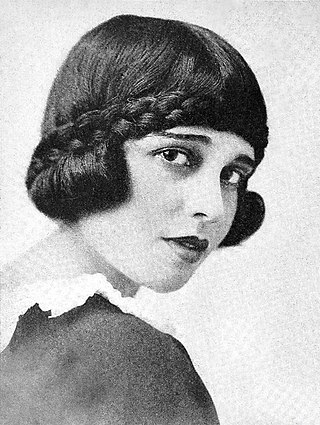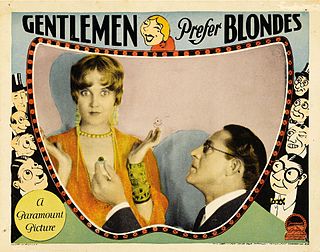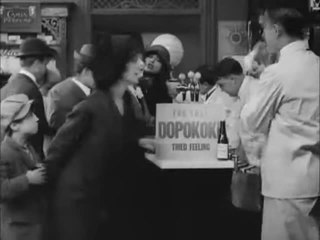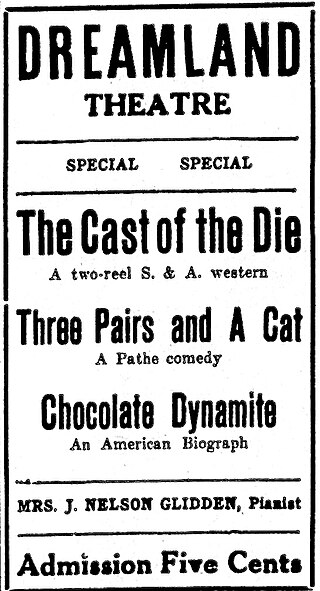Plot
This article needs a plot summary.(May 2019) |
| A Cure for Suffragettes | |
|---|---|
| Directed by | Edward Dillon |
| Story by | Anita Loos |
| Starring | Dorothy Bernard Kathleen Butler Dorothy Gish |
Production company | |
Release date |
|
A Cure for Suffragettes is a 1913 American silent comedy film. It was written by Anita Loos and directed by Edward Dillon for Biograph Company. [1] It stars Dorothy Bernard, Kathleen Butler, and Dorothy Gish. [2] [3]
This article needs a plot summary.(May 2019) |

Corinne Anita Loos was an American actress, novelist, playwright and screenwriter. In 1912, she became the first female staff screenwriter in Hollywood, when D. W. Griffith put her on the payroll at Triangle Film Corporation. She is best known for her 1925 comic novel, Gentlemen Prefer Blondes, and her 1951 Broadway adaptation of Colette's novella Gigi.

The Biograph Company, also known as the American Mutoscope and Biograph Company, was a motion picture company founded in 1895 and active until 1916. It was the first company in the United States devoted entirely to film production and exhibition, and for two decades was one of the most prolific, releasing over 3000 short films and 12 feature films. During the height of silent film as a medium, Biograph was the most prominent U.S. film studio and one of the most respected and influential studios worldwide, only rivaled by Germany's UFA, Sweden's Svensk Filmindustri and France's Pathé. The company was home to pioneering director D. W. Griffith and such actors as Mary Pickford, Lillian Gish, and Lionel Barrymore.

Judith of Bethulia (1914) is an American film starring Blanche Sweet and Henry B. Walthall, and produced and directed by D. W. Griffith, based on the play "Judith and the Holofernes" (1896) by Thomas Bailey Aldrich, which itself was an adaptation of the Book of Judith. The film was the first feature-length film made by pioneering film company Biograph, although the second that Biograph released.

The New York Hat is a silent short film which was released in 1912, directed by D. W. Griffith from a screenplay by Anita Loos, and starring Mary Pickford, Lionel Barrymore, and Lillian Gish.

Fay Tincher was an American comic actress in motion pictures of the silent film era.

Gentlemen Prefer Blondes is a 1928 American silent comedy film directed by Mal St. Clair, co-written by Anita Loos based on her 1925 novel, and released by Paramount Pictures. No copies are known to exist, and it is now considered to be a lost film. The Broadway version Gentlemen Prefer Blondes starring Carol Channing as Lorelei Lee was mounted in 1949. It was remade into the film Gentlemen Prefer Blondes with Jane Russell as Dorothy Shaw and Marilyn Monroe as Lorelei Lee in 1953.

The House with Closed Shutters is a 1910 American silent drama film directed by D. W. Griffith and released by the Biograph Company. Prints of The House with Closed Shutters exist in the film archives of the Museum of Modern Art, George Eastman House, and the Library of Congress.

For His Son is a 1912 American short silent drama film directed by D. W. Griffith and starring Blanche Sweet. The film was shot in Fort Lee, New Jersey when Biograph Company and other early film studios in America's first motion picture industry were based there at the beginning of the 20th century. A print of the film survives today.
Nell's Eugenic Wedding is a lost 1914 silent comedy of one reel directed by Edward Dillon. It is a primitive example by Anita Loos of what is called in modern terms a Gross-out film. Tod Browning, here just an actor, would later achieve renown as a director. Most reviewers 'damned' the film as repugnant or tasteless.

A Wreath in Time is a 1909 American silent comedy film written and directed by D. W. Griffith, produced by the Biograph Company of New York City, and co-starring Mack Sennett and Florence Lawrence. At its release in February 1909, the short was distributed to theaters on a "split reel", which was a single reel that accommodated more than one film. A Wreath in Time shared its reel with another Biograph short also directed by Griffith, the drama Edgar Allen Poe [sic]. Original paper rolls of contact prints of both motion pictures, as well as safety-stock copies of the two films, are preserved in the Library of Congress.

Her First Biscuits is a 1909 American silent short comedy film written by Frank E. Woods, directed by D. W. Griffith, and starring John R. Cumpson and Florence Lawrence. At its release in June 1909, the comedy was distributed to theaters on a "split reel", which was a single projection reel that accommodated more than one motion picture. It shared its reel with another Biograph short directed by Griffith, the drama The Faded Lilies. Prints of both films are preserved in the film archive of the Library of Congress.
Won by a Fish is a 1912 silent film comedy directed by Mack Sennett and starring Mary Pickford. It was produced by the Biograph Company and released as split-reel with The Brave Hunter by General Film Company.
The Little Tease is a 1913 silent black and white drama film directed by D. W. Griffith, produced by Biograph Company and starring Henry B. Walthall and Mae Marsh.

Women's suffrage, the legal right of women to vote, has been depicted in film in a variety of ways since the invention of narrative film in the late nineteenth century. Some early films satirized and mocked suffragists and Suffragettes as "unwomanly" "man-haters," or sensationalized documentary footage. Suffragists countered these depictions by releasing narrative films and newsreels that argued for their cause. After women won the vote in countries with a national cinema, women's suffrage became a historical event depicted in both fiction and nonfiction films.
The Reformation of the Suffragettes is a 1911 French silent comedy film produced by Gaumont Film Company.
For the Cause of Suffrage is a 1909 silent comedy film. It stars Francis Ford. It was produced by Gaston Méliès and copyrighted by Georges Méliès.
With the Aid of Phrenology is a lost 1913 short silent film comedy directed by Edward Dillon and starring Charles Murray. It was produced by the Biograph Company and released as a split-reel with Dyed But Not Dead.

The Road to the Heart is a 1909 American short film, a dramedy directed by D. W. Griffith and produced by the Biograph Company of New York City. Starring David Miles, Anita Hendrie and Herbert Yost, the production was filmed in two days in March 1909 at Biograph's studio in Manhattan. It was released in April that year and distributed to theaters on a "split-reel", which was a single film reel that included more than one motion picture. The other picture that accompanied this comedy was the Biograph comedy Trying to Get Arrested.

Jones and His New Neighbors is a 1909 American silent comedy film written by Frank E. Woods and directed by D. W. Griffith. Produced by the American Mutoscope and Biograph Company in New York City, the short stars John R. Cumpson, Florence Lawrence, and Anita Hendrie. It is one film in a series of 1908 and 1909 Biograph pictures in which Cumpson and Lawrence performed together as the married couple Mr. and Mrs. Jones. When this comedy was released in March 1909, it was distributed to theaters on a "split reel", which was a single projection reel that accommodated more than one motion picture. It shared its reel with another Biograph short directed by Griffith, the dramatic "thriller" The Medicine Bottle.

Chocolate Dynamite is a lost 1914 American silent comedy film produced by the Biograph Company and according to some modern references, directed by either Lionel Barrymore or Edward Dillon. Little is known about many aspects of this short, which had an approximate running time between six and seven minutes. No Biograph studio records have been found that conclusively identify its director or mention by name a single actor in the production. Records do document that the motion picture was based on "Captured by Dynamite", a short story written by Helen Combes. They also document that the comedy was filmed in New York City and was actually completed in late August 1913, a full six months before the company officially released it to theaters. During the picture's initial distribution in the United States, it was shipped on a "split reel", a term used in the silent era to describe a reel that held more than one motion picture. The film reel for Chocolate Dynamite also included Because of a Hat, another Biograph comedy short.
A CURE FOR SUFFRAGETTES Edward Dillon (d); Anita Loos (au); finished 24 September 1913 (f); New York (1); 17 November 1913 (r); 405 feet (rl); LU1630 ...